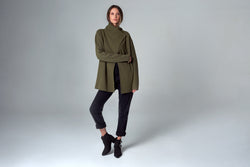Cable jumpers/ cable sweaters are known as Aran knitwear and originate from a set of islands off the west coast of Ireland, called the Aran Islands, in Galway Bay.
Ireland is iconically known for its cold, bitter weather and the Aran Islands, in particular, was (and still is) home to farmers and fishermen who need/ed warm clothes to weather the brutal elements and carry on with their jobs.

(picture from Pinterest)
Aran families (and knitters) often had their own patterns that were passed down through the clan through generations and the Aran sweater can have various combinations of stitching. The patterns can often be reflective of Celtic art.
"These Aran sweaters were often used to help identify bodies of fishermen washed up on the beach following an accident at sea. An official register of these historic patterns has been compiled, and can be seen in the Aran Sweater Market on the Aran Islands." (source)
Facts about Aran jumpers:
- they're water repellant thanks to the stitching
- they can absorb 30% of their weight in water before feeling wet
- they're breathable thanks to natural wool fibres
- they're incredibly warm as wool is a natural insulator
Hand knitted Aran (cable) knit jumpers are quite rare now as machine production makes them easy to produce on a large scale. Not to mention that traditional Aran jumpers would take around 100,000 unique stitches and 60 days to complete.
With a cable knit jumper, you are literally wearing a piece of Irish history, even if you didn't know it!
At Maxted we adore cable knit jumpers; they're a staple in our autumn/winter collections. We love their durability, warmth and flexibility for wearing with many outfits as a wardrobe staple.
Here are some of our favourites from the aw19 collection:



